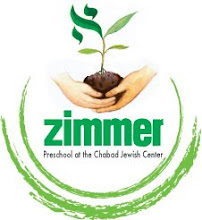We are scientists in the making. We are equipped with our appropriate tools, our five senses, to help us engage and learn about the world we live in. There is so much to uncover, discover and investigate in the budding season of spring and we are taking advantage of that.

 We use our noses to smell the abundant smells of spring: the air, the soil, the flowers, the forest, the trees and whatever else grabs our attention. We smell different flowers and see if their smells are similar to each other.
We use our noses to smell the abundant smells of spring: the air, the soil, the flowers, the forest, the trees and whatever else grabs our attention. We smell different flowers and see if their smells are similar to each other.
 We touch and try to get our hands on everything. But touch is not exclusive to our hands.
We touch and try to get our hands on everything. But touch is not exclusive to our hands. 
Our skin is the body’s largest organ so we can feel the world through our skin all over our bodies; rolling in the grass, walking barefoot, digging deep in the soil and making outdoor soil soup.
We stop and listen and take in the sounds of spring. What life is happening around us? Can we detect any animals or birds outdoors. Can we name what we hear? We can listen to the sound of the wind blowing through the tree branches, or through wind catcher. We can hear the sounds of the active or slow flowing river.
 There is so much to see and let our eyes take in the beauty of the world.
There is so much to see and let our eyes take in the beauty of the world. 
We spend lots of time outdoors noticing the details in nature. Little ants crawling on the tree branches or daddy longlegs crawling on the bike path; we see little grass growing in the cracks of the cement and flowers beginning to bud on the trees.
Now that spring is here we can begin to prepare vegetable seeds to plant in our outdoor garden. Soon we will be able to taste the ‘fruits of our labor.’ We have been sampling and tasting some the yummy fruits of the
 season as we learn more about fruit and vegetable seeds and share snacks of fresh cut fruit and vegetables and look for their seeds, peel and learn the many ways to describe them.
season as we learn more about fruit and vegetable seeds and share snacks of fresh cut fruit and vegetables and look for their seeds, peel and learn the many ways to describe them.As we use our senses to discover the world we are using our mind, body and emotion to process all that we are learning. Along the way we will be enhancing many skills that help us connect what we see, hear, smell, taste and touch to a level of understanding. We will enhance our logical thinking skills, observation skills, social emotional skills and of course, we will be enjoying the growth and freedom that nature represents.
Each fruit has it's own unique characteristics. We are learning ways how to describe the things that we see. One way we can stop to notice things is to ask ourselves questions to help us concentrate on specific areas. Therefore we are asking ourselves questions to help us notice the some of the details. Come ask along with us. Try asking your child these questions at home when you are preparing some fruits and vegetables for dinner, snack or lunch:
- Where are my seeds located? -inside or outside of the fruit,
- Do I have a peel, if so can I eat it?
- Can you eat my seeds?
- What size are my seeds?
- What color is my inside and my outside?
Here are some photos of us investigating and enjoying natures treats.
Thank you to all our friends for bringing in these yummy snacks.






 Soon we will be sampling more fruits and vegetables. We are waiting for the mangoes in our classroom to ripen so we can investigate them as well as avocados. We will keep you posted.
Soon we will be sampling more fruits and vegetables. We are waiting for the mangoes in our classroom to ripen so we can investigate them as well as avocados. We will keep you posted.Morah Batsheva


No comments:
Post a Comment